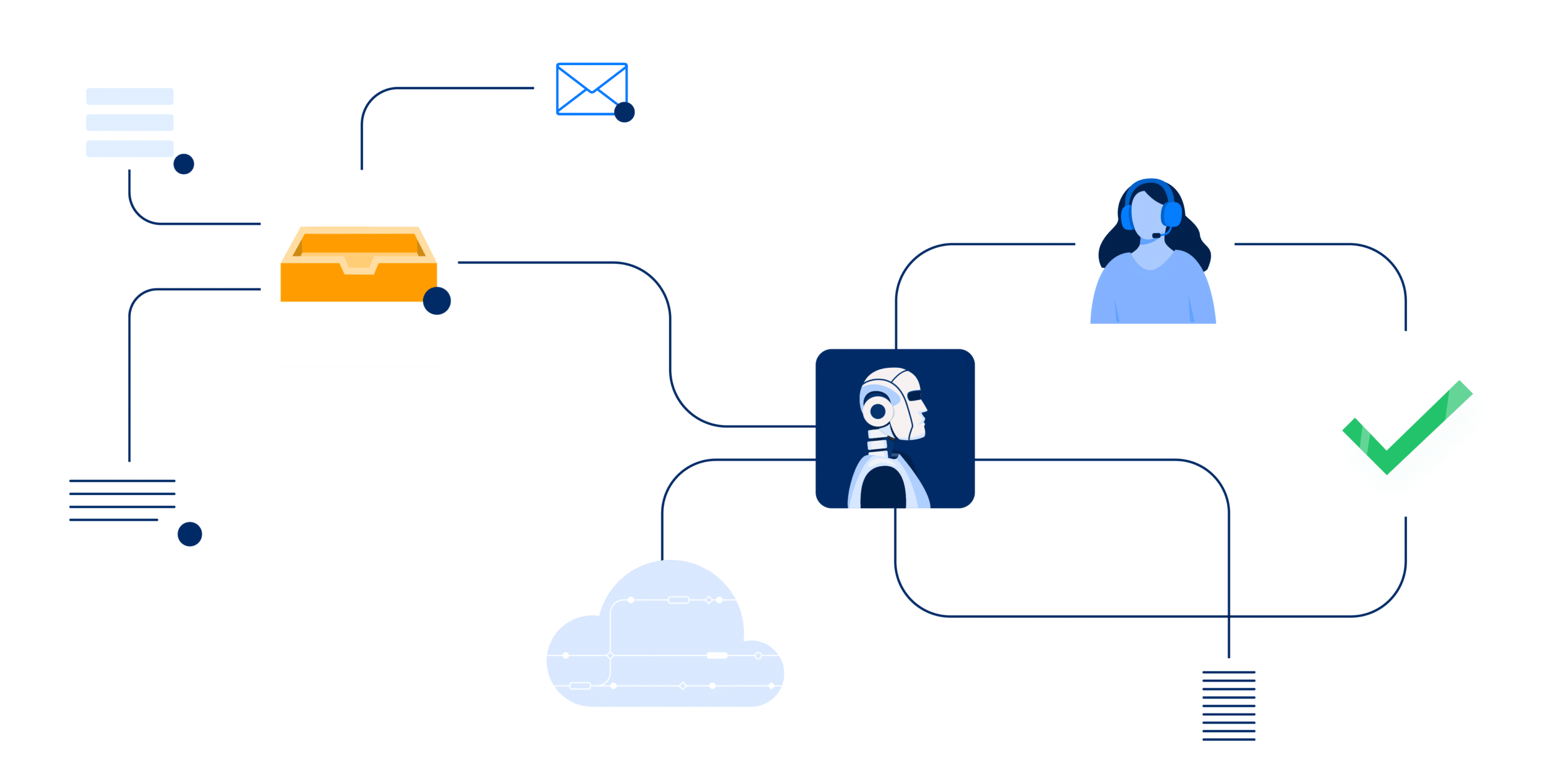In the past decade alone, automation has advanced exponentially. The entry-level smartphone of today is capable of writing the programs that operated the robots of yesterday. And this innovation is showing no signs of stopping, as the entire economy is preparing for the next wave of automation.
The concept behind robotic process automation (RPA) is exciting because the use of computers and machines lowers the cost of production in every part of the economy. The federal government is addressing the need for RPA solutions in its processes, even as they face RPA challenges similar to those in the private sector.
As the government looks at methods of replacing legacy systems that require intensive human interaction, they must deal with federal labor unions and laws that could not envision a machine doing the work of a human. For effective RPA implementation, it is essential to identify those tasks that are high volume, simple, rules-based, and repetitive. Other areas also ripe for automation involve digitized information. For instance, digitized information is machine-readable, thus eliminating the need for intensive human interface.
Now that we are entering the age of AI, where machine learning helps write its own programming while continually improving accuracy and efficiency, we must remain vigilant to address the challenges and questions that we identify today, and those identified tomorrow.
For the RPA challenges listed here, there is no logical order, as some are ongoing processes and some are done simultaneously with others. Likewise, this is not an exhaustive list of RPA challenges. But it’s critical that we stay vigilant, because, as with any significant change, the law of unintended consequences is bound to make an appearance.

RPA training.
Since it takes commitment from upper management, investors, boards of directors, and employees to overcome RPA challenges, it is important to begin AI training early. Everyone needs to buy into the concept of process automation. Part of that is engaging each level of company personnel to find out what their vision is in order to choose the right processes that help accomplish the goals.
Training around how to develop, operate, and maintain a rules-based automated system is vital to mission success. Training must start prior to rollout in order to ensure a smooth transition. The more each person knows about their role in the RPA transition, and the more each person understands the goals of the business, the more receptive they are to personally investing in the new technology.
Communication and change management.
Some RPA challenges don’t actually involve the tech. Upper management must hear the input of employees at all levels and they must address any issues with straightforward answers. If automation reduces the number of employees needed by 20%, saving the company ten times the combined salary of those employees, company execs should say exactly that. However, it should also be made clear that as employee duties evolve from repetitive manual tasks to monitoring the automated process, employees will transition into more value-added roles and responsibilities.
Partnership with IT.
Another major RPA challenge is: management should necessarily have the support of the entire IT department. Most organizations lean on their IT employees to help train the rest of the workforce in the ways of machine learning and task automation. The technical employees should move from the back room, into the main office, at least for the duration of the digitization process. Encourage a cooperative partnership between IT and employees, and between management and IT.
Define the success criteria.
At every level, company personnel will have different ideas of what success looks like. If everyone remains committed to the mission of the company, each of those visions is attainable. A vital step with RPA implementation is ensuring that everyone has realistic expectations, while simultaneously acknowledging that some personnel will see ways to make the automated processes even better than planned. Having a plan is required, just as having flexibility and an open mind is a key element in achieving success.
Corporate accountability.
Like any new change, expect resistance. Continually assess the resistance. In most cases, time will help the team understand that this investment is designed to make the jobs of everyone easier, to keep the company viable, to improve the quality of life for everyone, and eventually lead to more profitability.
Where there is RPA management, by definition, there is RPA mismanagement. Additionally, errors will be made. Managers and employees alike should own the responsibility for any errors, both up and down the corporate hierarchy. By sharing the lessons learned from the mistakes of others, we reduce the chances of someone else repeating that action.
Reskilling employees.
If there is one RPA challenge that is ever-so-slightly elevated in importance so as to call it the key to a successful RPA deployment, this would be it. When companies automate jobs, employees question company loyalty. If the team is future-proofed with RPA training, they can rest assured that there will be a place for them after RPA implementation.
Some employees may take college courses, for which the company may consider cost-sharing, and others may monitor RPA software and the output. Still, others may train to make physical repairs to computers or machinery. Training is expensive, but so is training new employees on company policies. By reskilling the workforce, that expense is reduced.
Engaging employees and respecting their expert knowledge will make it more likely that they will positively assist with implementing the RPA process.
While reskilling personnel is tantamount to successful RPA implementation, choosing the correct RPA software solution is just as important. If RPA training begins far enough in advance, employers will gain the ability to have employees compare the functionalities of each software package.
By interacting positively with the workforce, training them early on RPA processes, promoting accountability at all levels, encouraging a strong partnership with the internal IT department and all levels of employees, and then intelligently setting achievable milestones during the implementation process, company productivity will increase, and the company will surely realize an impactful ROI.

The Guide to Support Automation
Discover:
- The different types of AI
- A framework for applying support automation
- Tips for choosing solutions


